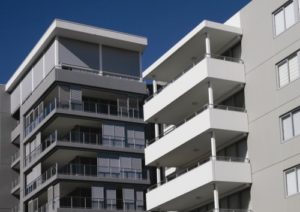
The background for these tips are that the owner may have a loan application declined because the valuation came in too low. There are 9 ways to ensure that the valuation is correct.
1. Be very specific and actually measure your apartment area and associated areas:
One of the most important aspects of determining a value of an apartment is the size of the apartment itself, the size of associated areas such as balcony/terrace area and storage cage, if applicable. In short, the valuer assesses value of the apartment on these units of comparison. If there is a variance between the actual size and perhaps what the valuer measures, you have an ideal point to commence any discussion as to the assessed value. This is critically important.
2. Recent sales evidence
If you know the sale prices achieved of any recent property sales within your specific development, within the last 3 months, or even the last 6 months, have that information available for the property valuer and provide them with a copy of details of the sale.
3. Presentation
As property participants, we all know that one of the most telling factors within either the valuation or sales process is the “presentation” of the apartment. This is even more important within an apartment, as to the living and associated areas reflecting the only core value in the main, in addition to common areas and car parking. De-clutter and make sure all areas of the apartment are cleaned up. It’s been said before “first impressions” are “lasting impressions” even with apartments.
From my point of view as a valuer, they should be pristine and in a condition needed for an open for inspection, there is nothing worse than inspecting an apartment with dishes in the sink, toilet seat up and the area generally untidy. The usual size of an apartment is clouded by general untidiness. Make sure it is cleaned, freshly painted, etc.
4. Make sure your cosmetic or structure improvements are completed (if you can) prior to the valuation
If any improvements are to be made, hold off on the valuation until they are completed. “Every picture tells a story’ and it is true with a valuation. It doesn’t matter how much information you provide, it is a lot easier to visualise once complete. It also doesn’t matter if you tell the valuer that you are placing in a new kitchen in 3 weeks, until it is affixed and completed (unless instructed otherwise), value will only be attributable to “as is” value.
5. Don’t over capitalise
Be mindful of what structural works you actually undertake and remember there is very much a “ceiling value” in most apartments, they definitely reflect a value range and remember because you spend a dollar, doesn’t necessarily guarantee that you will get a dollar back. Over capitalisations are one of the most common owners’ faults in this market segment. Be mindful of the specific market segment you are targeting whether it be owner occupier or investor segments. Remember, the price points of the development and general locality. If one was to consider refurbishment, the obvious structure areas to consider are the kitchen and bathroom areas.
6. List the recent improvements
Regardless of what you do to your property prior to valuation, receipts or cost analysis etc. definitely provides the valuer with a clear picture when inspecting the property. Make sure the valuer is aware of any changes made subsequent to an initial valuation (or purchase of the property).
7. Be honest and leave the valuer to do their work after you have provided whatever information you need to give them
As with any professional, the valuer is time poor. Provide the sales data, confirmatory building area, building cost receipts, then leave them to do their job. Point out common facilities of the development; maybe pool area, garden area, courtyard or barbeque area to the apartment specific and others. Most mortgage valuers usually return their reports within 48 hours of inspection.
8. If you are not happy, challenge the value
In most circumstances, the owner pays for the valuation, therefore ask for a copy of the report. It is probably not made out in favour of you, but I would recommend receiving a copy for your records. Thereafter, if you are not happy, you at least have a guide as to where some issue/s may apply. Remember, a valuation is relatively subjective, and based on a variety of factors, but none more important within the apartment sector as the per square metre rate on an overall living area, net of balcony and other areas. Lastly, there is really no true figure unless you test the market.
9. Was your loan declined due to a kerbside/desktop valuation being done by your bank?
Mortgage lenders from time to time do not instruct valuers to undertake an internal inspection, hence, for example, how has the valuer taken into consideration the view/aspect enjoyed by the subject property? Therefore, it is imperative to ensure an internal full and thorough inspection is undertaken. Ask the lender to undertake a full valuation. For the best results, provide written confirmation to the valuer which might support your case and then leave them and the total process to be finalised.
Mark Ruttner is the Managing Director of First Valuation Group (FVG Property) and is a Fellow of the Australian Property Institute, a member of the Real Estate Institute of Victoria, Associate of the Royal Institute of Chartered Surveyors and a Certified Practising Valuer.